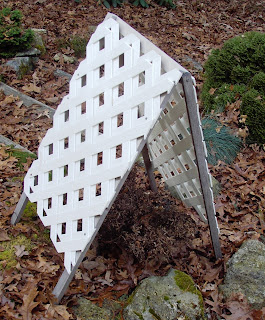If you have roses, and temperatures at your home dip below 5˚F, you need to protect roses. Your goal is to lessen the effects of winter’s freezing and thawing cycle, and to keep the branches from whipping about which, in turn, causes roots to loosen. Reduce stress on roses going into the dormant season by irrigating adequately before the ground freezes.
Hybrid Teas, grandifloras and floribundas should be protected from winter damage after a killing frost but before the soil freezes. Reduce breakage of tall canes by winter winds by cutting them back to 24 to 30 inches and tying tips together. Remove dead and fallen leaves around the plants – cleanliness now helps reduce disease next year. Mound soil over the center of the plants in broad, rounded mounds 8 to 12 high and 12 inches wide. Never use soil from the bed—you are robbing the roots to save the crown. Cover the soil mounds with a mulch of leaves, straw, boughs, or some similar material.
An alternate way of protecting roses is to use a lighter material that will include many air pockets such as wood or bark mulch. In the spring, the mulch can be spread around the rose bed and won’t need to be carried away. Other rosarians prefer to construct wire mesh cylinders to surround each plant, which they fill with mulch, leaves or straw. Or, you may use rose cones (inverted paper maché or plastic baskets), or burlap to wrap individual plants. When the first signs of growth appear in the spring, carefully remove most of the mulch and soil from around the bases of plants.






